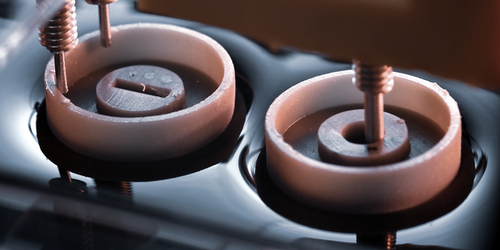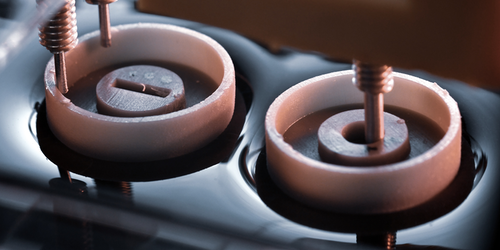The Force that Clumps Your Breakfast Cereal
Objects that float in a liquid, such as Cheerios in a bowl of milk or, less appetizingly, mosquito eggs in water, tend to cluster together because of a liquid force known as capillary attraction. Researchers seek to exploit this self-assembling capability for microrobotics. However, it is difficult to measure capillary attraction. Most methods involve attaching sensors to the floating objects and these sensors can interfere with the objects’ natural motion. Now, Daniel Harris of Brown University and colleagues demonstrate a magnetic technique that allows them to study capillary attraction between centimeter-sized objects without directly connecting them to measurement sensors. From their measurements, they derive a mathematical relationship between capillary attraction and properties of the floating objects that could aid in the design of tiny robots.
The team measured the capillary attraction between two coin-sized 3D-printed plastic disks, one of which contained a permanent magnet. They floated the disks next to each other on a water bath that was surrounded by two current coils. These coils generated a magnetic field gradient across the bath that pulled on the magnet-containing disk. When the magnetic force exceeded that of capillary attraction, this pulling caused the disks to move apart.
Varying the initial distance between the disks, the team recorded the current that they needed to apply to the coils to pull the disks apart. Then, they derived a scaling law that relates the strength of capillary attraction to disk mass, diameter, and spacing. The law indicates, for example, that the attractive force between the objects scales with the square of its mass. Having completed the characterization of the capillary attraction between passive objects, the researchers are now studying the same forces for floating objects that drive their own motion. They aim to develop a highly controllable artificial system to further study how objects self-assemble and move collectively in fluids.
This research was published in Physical Review Letters.
–Sophia Chen
Sophia Chen is a freelance science writer based in Tucson, Arizona.





